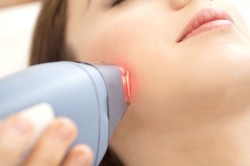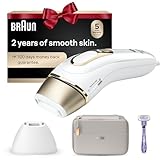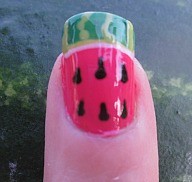Have you tried using a Laser Hair Removal kit at home? Tried it at a clinic, perhaps? Have you ever wondered if they are safe and which ones are good and which might not be so good to use?
The idea of lasers doing a job that heretofore couldn’t be done or required special treatments of some kind or surgery are a thing of the past. Today, lasers are used for an unlimited variety of needs from electronic devices to getting rid of old tattoos.

Laser Hair Removal; Does It Work, Is It Safe?
Some things to know before you try a laser hair removal system at home
Laser Hair Removal; Does It Work, Is It Safe?
Great Looking
Recently while watching television I noticed an ad for a laser hair removal kit that you could buy and use at home. It got me wondering if such a thing could work and whether it was safe.
First Stop, The FDA
To find answers to my questions my first stop was at the U.S. Food and Drug Administration (FDA), which is charged with giving clearance to all such devices. According to the FDA “the popularity of laser hair removal has increasingly grown so quickly that the FDA cannot maintain an up-to-date list of all laser manufacturers whose devices have been cleared for hair removal.” That didn’t sound good. The agency does keep a database of “adverse affects” and other information. But, you have to know the name, model number and other info in order to access what you might be looking for. So, if you were looking to buy a machine it would be difficult to wend your way through the database.
Oddly, even if a product is found to have FDA clearance the agency says that “does not permit them to advertise lasers for either hair removal or wrinkle treatment.” Yeah, that had me scratching my head as well. The agency also says manufacturers can’t claim the process is painless nor permanent unless there is enough evidence submitted to the agency that proves the claim. So, you could see claims for “permanent reduction,” but not “permanent removal.” Even the words “permanent hair reduction” won’t mean all hairs will be removed from the treatment area, says the agency.
The agency’s Center for Devices and Radiological Health also offers cautions about laser hair removal (which might also be regulated by states). Look to see if the kit you buy has some kind of cream that helps anesthetize the skin to avoid pain and discomfort. Most won’t and pain is an issue with these machines. Also, consulting with a medical professional before taking on a self-removal process is a good idea. Another FDA center, for drug evaluation and research, has reported a number of reports of serious and life-threatening side effects from the use of large amounts of skin-numbing products in the laser hair removal process. Such effects can include blistering, discoloration, swelling, redness and scarring. You also have to remember to avoid sunlight while you heal from the procedure.
Skin Issues
The nature of your skin can also be an issue in laser hair removal. The contrast between hair and skin makes a difference. Darker skinned people are warned not to try the process, because the laser will be absorbed by the dark pigment and could quickly cause injury or skin damage.
What Products To Use?
Despite warnings, laser hair removal is very popular. The American Society of Plastic Surgeons says it is the fourth most-common minimally invasive procedure that doctors perform in their offices (at about $400 a session). But, doing it at home?
The first in-home laser hair removal product was introduced in Japan in 2005 and was approved for use in the U.S. in 2008. Its cost is also in the $400 range.
One of the newest and most promoted laser skin removal devices is called Tria. It sells at Amazon for about $300 (on the Tria website it’s about $450). Like most home use devices its laser is less powerful than those systems used in a doctor’s office.
Reports from people using the device say it can be painful – more so than doctor’s office treatments. The settings typically can be adjusted from low to high, the higher you go the more pain you might experience. There is no numbing cream provided with the basic device so some people have pre- or post-medicated with aspirin.
Another similar product is the Remington I-Light system, which sold recently on Amazon for about $230. Other products include the Silk n’ Flash & Go System for about $209 recently on Ebay, the i-Light Pro system ($275 on Ebay), and the Phillips Lumea Precision Plus system for over $700 on Ebay. There’s a whole host of lesser-known brands on the market and some may not have received FDA approval so buyer beware.
You might also like
How to create a Watermelon Nail DesignCreate this SWEET Watermelon Nail Design by following my easy step by step tu...







 The Problem With Wizzley and Amazon Associateson 10/17/2014
The Problem With Wizzley and Amazon Associateson 10/17/2014
 Happy Wife, Happy Life: Is It True?on 10/02/2014
Happy Wife, Happy Life: Is It True?on 10/02/2014
 Arborsculpture Designs Are Beautiful And Practicalon 09/30/2014
Arborsculpture Designs Are Beautiful And Practicalon 09/30/2014
 The Religious And Immoral Actson 09/23/2014
The Religious And Immoral Actson 09/23/2014

Comments
Revisiting your wizzley called to mind a question that I had the first time around.
The Food and Drug Administration advises that it can't keep up with the fast-growing array of laser hair-removing devices. But is there a way of finding out which devices were able to get and keep that FDA approval?
TheWritingCowboy, Is there some kind of FDA clearance or rating for the numbing creams?
I've had my bikini line lasered. I went to a Harley Street clinic in London where I was assessed by a qualified nurse. Thereafter, all my treatments were administered by a beautician. All I'm going to say is that it worked out cheaper than waxing, and was marginally less painful. Marginally. When they said it feels like someone flicking elastic bands on you, the person whose done the flicking must be very, very strong.